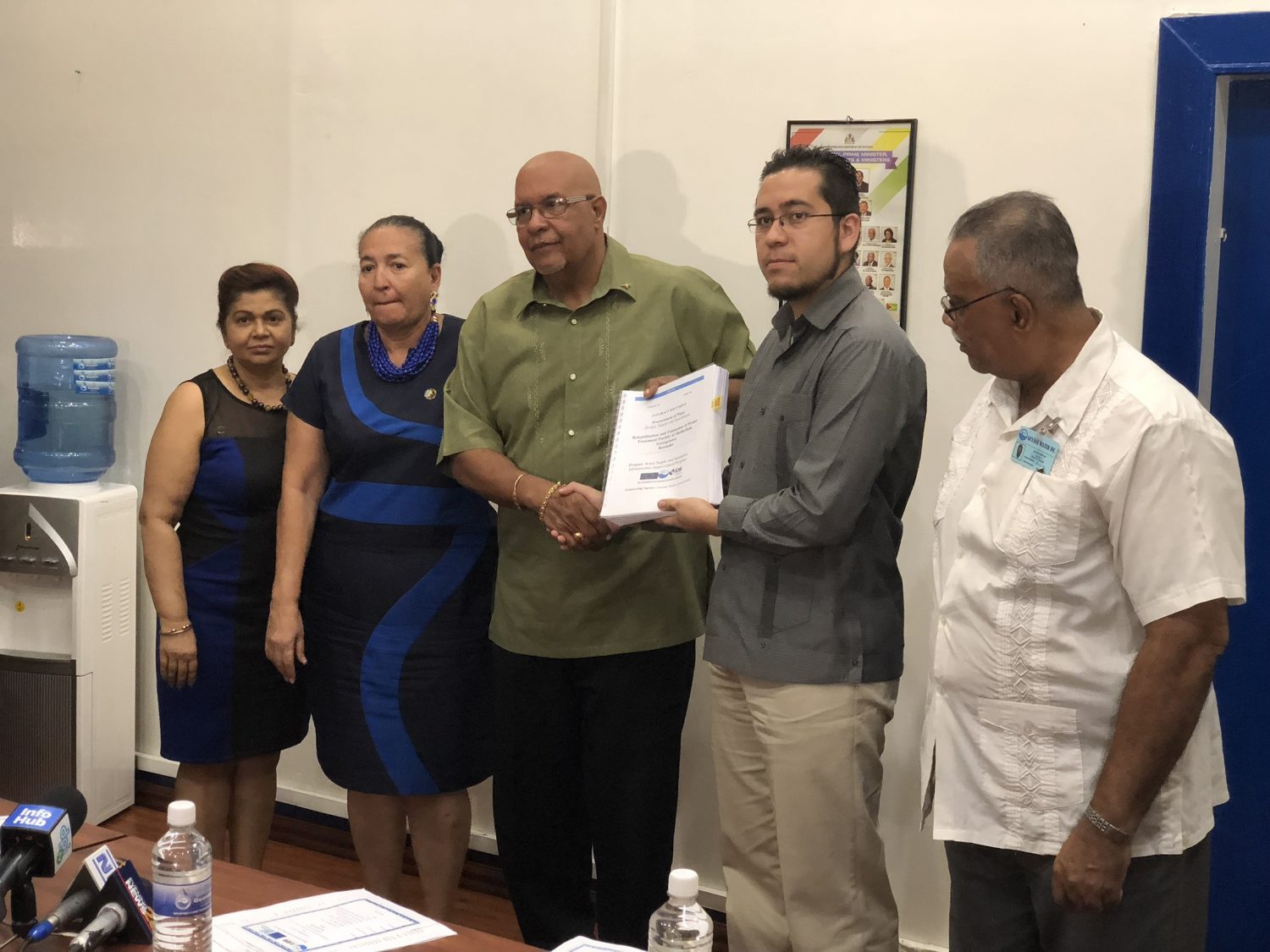Guyana Water Incorporated (GWI) yesterday signed an agreement with a Mexican company for the rehabilitation of the Shelter Belt, which is expected to significantly improve the quality of water supplied to residents of Georgetown.
The US$3.5 million project is part of GWI’s Water Supply and Sanitation Infrastructure Improvement Programme and is funded by a grant from the European Union and a loan from the Inter-American Development Bank.
Through a tendering process, Mexican company Hi-Pro Ecologicos S.A de C.V was awarded the contract for the project, which is expected to be completed within 18 months.
Speaking at the signing of the agreement yesterday at GWI’s headquarters in Georgetown, Managing Director Dr. Richard Van West-Charles called it an important milestone in GWI’s thrust towards improving the water supply around the country and in the capital city of Georgetown, where there has been a “significant slippage” in the water quality.
“This plant really requires, because of the expansion of the city, rehabilitation until we can do a complete overhaul. We recognised that there was significant slippage in terms of the water quality of water coming from Shelter Belt,” he noted.
Van West-Charles said when he took the helm of GWI in 2015, one of the most important strategic developments he focused on was improving the water quality across the country, especially in Georgetown.
He noted that they have been working on aligning their standards with those of the World Health Organisation (WHO). However, he noted, that this does not mean that they do not have gaps and one of the areas they have to address is the Shelter Belt in order to make it more efficient and cost effective in the long run.
“Most people will know that Shelter Belt is a major landmark in our history. It had its birth way back in 1929. We started to take only surface water to serve the city of Georgetown. The first set of plans for the rehabilitation of Shelter Belt occurred between 1935 and 1939 and then the World War commenced and delayed the implementation and not until the early 1950s the rehabilitation started,” Van West-Charles explained.
He stated that since then they have done a lot of things to improve the water supply level and have expanded the system but much rehabilitation work has not been done.
The rehabilitation project will see the overhauling of the chemical mixing system as well as rehabilitation of the insulation and valves for better treatment. The filter system, which Van West-Charles said is one of the systems that has been neglected for a very long time, will also be rehabilitated.
While rehabilitation works were done in 2016, Van West-Charles noted that “we can do better and therefore this project will assist us.”
“Presently, and we didn’t wait for the project, water is being monitored on an hourly basis in Georgetown 24/7 and that is why we can boast about the quality of the water emanating from the plant. As we say, water is life but it requires a sound infrastructure and the lines and distribution network we have to be looking at,” he noted, while emphasising that there are major works that have to be done on the distribution network in the city.
“We have to get to a point where the black tanks that dot the landscape will be reduced significantly and at the same time ensure citizens have got the requisite information to maintain black tanks and to help us maintain infrastructure so that we can produce the highest quality of water,” Van West-Charles added.
Chairperson of the GWI’s Board of Directors Patricia Chase-Green also made brief remarks on the importance of upgrading and rehabilitating Shelter Belt.
In brief remarks, Luis Fabela, representative of the Mexican firm, said the project is a big opportunity to meet the challenge of improving the quality of water for GWI’s consumers. He said that the company has been doing business on the international market for over 20 years and will use its experience to ensure that it gets the work done in time.





